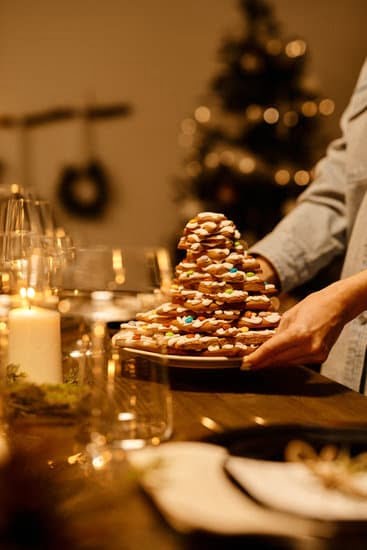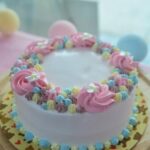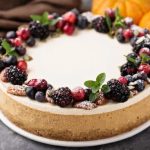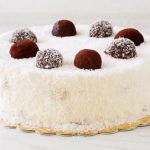When it comes to cake decoration, nothing adds an elegant and stylish touch quite like royal icing bows. These delicate and intricate designs have long been a popular choice for both professional bakers and home enthusiasts. In this article, we will explore the many benefits of using royal icing bows as cake decorations, from their versatility to their ability to elevate any cake design.
Royal icing bows offer a timeless beauty that instantly captivates anyone who lays eyes on them. Whether adorning a wedding cake or adding a touch of luxury to a birthday celebration, these delicate embellishments create a sophisticated focal point. The clean lines and smooth texture of royal icing give the bows a polished look that beautifully complements the overall cake design.
Beyond their aesthetic appeal, there are several practical advantages to using royal icing bows as cake decorations. Firstly, they are incredibly versatile and can be tailored to suit any occasion or theme. From classic loops to intricate ribbon-like bows, there is no limit to the creativity you can bring to your designs. Furthermore, royal icing bows can be customized with colors, embellishments, and even personalized messages to truly make them unique.
Join us in discovering how you can bring your cakes to life with these exquisite royal icing bow decorations. In the following sections, we will delve into essential tools and ingredients needed for creating these beautiful flourishes. We will also provide you with step-by-step instructions on achieving picture-perfect royal icing bows, along with tips and tricks for professional results. Keep reading to unlock the secrets of creating stunning edible works of art that are sure to impress.
Essential Tools and Ingredients for Creating Royal Icing Bows
Creating beautiful royal icing bows for cake decoration requires a few essential tools and ingredients. Having the right equipment and ingredients on hand will ensure that your bow-making process is smooth and successful. Below is a list of necessary tools and a detailed explanation of the ingredients required for making royal icing bows.
Tools
- Piping Bag: A piping bag with a small round tip or a star tip will allow you to easily control the flow of royal icing while creating the bows.
- Icing Tip: Depending on the desired size and shape of your bows, different icing tips can be used. A small round tip works well for classic loops, while a petal tip can create more intricate designs.
- Parchment Paper: Cut squares or rectangles of parchment paper to serve as templates for piping the bows. This will ensure uniformity in size when creating multiple bows for a cake.
Ingredients
- Powdered Sugar: Also known as confectioners’ sugar, this is the base ingredient for royal icing. It should be sifted before use to remove any lumps.
- Egg Whites: Pasteurized egg whites are recommended to minimize any risk of foodborne illness. Alternatively, meringue powder can be used as an egg white substitute.
- Flavorings: Vanilla extract, almond extract, or any other desired flavoring can be added to enhance the taste of the royal icing.
Using these tools and ingredients, you can start creating beautiful royal icing bows to elevate your cake designs. In the next section, we will provide a step-by-step guide on how to create perfect royal icing bows, covering everything from preparing the icing to piping the bows onto the cake.
Step-by-Step Guide
Creating Perfect Royal Icing Bows requires precise techniques and attention to detail. Follow this step-by-step guide to achieve beautiful and professional-looking bows for your cake decorations.
Step 1: Prepare the Royal Icing
To begin, gather all the necessary ingredients for the royal icing. This includes powdered sugar, egg whites (or meringue powder as a substitute), and flavorings such as vanilla extract or lemon juice. In a mixing bowl, combine these ingredients and beat on low speed until well combined. Gradually increase the speed to high and continue beating until stiff peaks form.
Step 2: Choose the Right Piping Tools
Using the right piping tools is essential for creating perfect royal icing bows. You will need a piping bag fitted with a small round tip, usually a size 2 or 3, for optimal control over the icing flow. Additionally, prepare parchment paper by cutting it into rectangular strips of the desired length for your bows.
Step 3: Pipe the Bow Loops
Start by holding the piping bag at a 45-degree angle above the parchment paper strip. With steady pressure, pipe two elongated loops side by side in opposite directions, starting from one end of the strip and curving towards each other at the center. Release pressure on the bag and lift it away to create an indent between the loops.
Step 4: Add the Tails
After creating the bow loops, hold onto one loop with your finger to keep it secure while you pipe a V-shaped tail beneath it. Repeat this process on both sides of the bow loops. You can adjust the shape and size of these tails to achieve different bow styles.
Step 5: Let It Dry
Once you have piped all your bows onto parchment paper, set them aside to dry at room temperature for several hours or overnight, depending on the humidity level. It’s crucial to let the royal icing harden completely before handling or transferring them onto the cake.
Step 6: Carefully Transfer and Arrange
Using an offset spatula or a small pair of scissors, carefully lift each dried royal icing bow from the parchment paper and place them onto your cake. Arrange them in a visually pleasing way, making sure they adhere well to the surface of the cake.
By following this step-by-step guide, you will be able to create perfect royal icing bows that will add a touch of elegance and sophistication to any cake design. Experiment with different bow styles, sizes, and colors to customize your creations and make your cakes truly stand out.
Tips and Tricks for Achieving Professional-Looking Royal Icing Bows
Achieving Consistent Piping
One of the key factors in creating professional-looking royal icing bows is achieving consistent piping. This means that each bow should have a uniform size and shape, without any variations in thickness or uneven edges. To achieve this, it’s important to practice the piping technique before applying the icing onto the cake.
Start by holding the piping bag at a 45-degree angle and squeezing with steady pressure as you guide the icing along. Use smooth, controlled movements to create clean lines and avoid any jerky motions that can result in shaky or messy bows. It may take some practice to get the hang of it, so don’t be discouraged if your first few bows are not perfect.
Another helpful tip is to use a template or guide when piping the bows. You can create a simple paper template with the desired shape and size of your bow, then place it on top of your cake as a reference point. This will help ensure that all your bows are consistent in size and shape, giving them a professional look.
Adding Dimension and Texture
To take your royal icing bows to the next level, consider adding dimension and texture for a more realistic and professional finish. There are various techniques you can use to achieve this effect.
One method is known as “flooding.” After creating the outline of your bow with royal icing, fill in the shape with thinner icing using a small spatula or brush. This will give your bows a smooth surface and add depth to their appearance.
You can also experiment with different piping tips or techniques to create texture on your bows. For example, using a star-shaped tip can create ridges or ruffles on the loops of your bow. Alternatively, you can gently drag a toothpick through wet icing to create lines or patterns.
Remember to let each layer of icing dry before adding any additional details or layers. Patience is key in achieving a professional-looking finish.
Drying and Handling the Bows
After piping your royal icing bows, it’s important to let them dry fully before attempting to handle or move them. This will ensure that they maintain their shape and don’t collapse or break.
To speed up the drying process, you can place the cake or the piped bows in a cool, dry area with good airflow. Avoid placing them in direct sunlight or humid environments, as this can cause the icing to take longer to dry or melt.
Once the bows are completely dry, carefully lift them off the parchment paper using a small offset spatula or your fingers. Handle them gently to avoid any breakage. If any parts of the bow are still slightly wet or sticky, allow them more time to dry before attempting to handle them.
By following these tips and tricks for achieving professional-looking royal icing bows, you can elevate your cake decorations and impress your guests with your attention to detail and craftsmanship.
Coloring and Decorating Royal Icing Bows
When it comes to cake decorating, royal icing bows offer a versatile and elegant option that can truly elevate the overall design. In this section, we will explore different coloring options for royal icing bows and techniques for adding decorative elements to enhance their look.
Incorporating Color
To add visual interest and personalize your royal icing bows, you can experiment with various coloring options. Gel-based food coloring is a popular choice as it provides vibrant colors without altering the consistency of the icing. Start with a small amount of coloring gel and gradually add more until you achieve the desired shade. Remember that a little goes a long way, so it’s best to add the coloring incrementally.
If you prefer a more subtle effect or want to achieve pastel shades, consider using edible dusts. These powdered colorings can be mixed into your powdered sugar before adding other ingredients. Use a small sifter or sieve to evenly distribute the dusts and prevent clumping.
Adding Decorative Elements
While royal icing bows are beautiful on their own, you can take them to the next level by incorporating additional decorative elements. Edible pearls are perfect for adding a touch of elegance and sophistication. Gently press them onto the surface of the bow while the icing is still wet, ensuring they stay in place.
For those looking to make their royal icing bows truly luxurious, gold leaf is an excellent option. Apply small pieces of gold leaf onto the bows using a soft brush or tweezers. The result is stunning and adds a glamorous touch.
Combining Techniques
Don’t be afraid to combine different coloring techniques and embellishments to create unique and eye-catching royal icing bows. For example, you can use colored gel for the main body of the bow and dust the edges with edible gold dust for an opulent finish.
Experiment with different color combinations and embellishments to match the theme or occasion of your cake. Get creative and let your personal style shine through in every decorative detail.
By utilizing coloring options and adding decorative elements, you can transform simple royal icing bows into extraordinary focal points that will wow your guests. The next section will address common issues that may arise during the process of creating these beautiful decorations and provide solutions for troubleshooting.
Troubleshooting Common Issues in Royal Icing Bow Making
Creating royal icing bows can be a delightful and satisfying process, but it is not without its challenges. Whether you are a beginner or an experienced baker, it is common to encounter some difficulties along the way. In this section, we will address some of the most common issues that may arise during the royal icing bow making process and provide solutions to help you overcome them.
One common issue that bakers face when making royal icing bows is related to the consistency of the icing. If the icing is too runny, it will not hold its shape when piped onto the parchment paper. On the other hand, if the icing is too stiff, it can be difficult to pipe smoothly and intricately.
To achieve the perfect consistency, start by following your recipe precisely and then make adjustments as needed. If the icing is too runny, gradually add more powdered sugar until it stiffens up. Conversely, if the icing seems too stiff, add small amounts of water or egg whites to thin it out.
Another problem that may occur is bow breakage during or after piping. This can be disheartening after spending time and effort on creating beautiful bows. To prevent breakage, ensure that your piping bag has a small opening for fine details and use gentle pressure when piping onto the parchment paper. Additionally, allow enough drying time before handling or transferring the bows onto your cake.
| Issue | Solution |
|---|---|
| Icing consistency is too runny | Add more powdered sugar gradually until desired stiffness is achieved |
| Icing consistency is too stiff | Add small amounts of water or egg whites to thin out the icing |
| Bows break during or after piping | Ensure gentle pressure when piping and allow enough drying time before handling the bows |
By addressing these common issues and following the provided solutions, you can overcome challenges in royal icing bow making and create beautiful decorations for your cakes. With practice and patience, you will be able to troubleshoot any problems that arise and achieve professional-looking results every time.
Inspirational Ideas for Incorporating Royal Icing Bows into Cake Designs
When it comes to cake designs, royal icing bows are a versatile and elegant addition that can elevate any creation. Whether you’re a professional baker or a home enthusiast, incorporating royal icing bows into your cake designs can add a touch of sophistication and charm. From weddings to birthdays, anniversaries to baby showers, royal icing bows can be adapted to suit various themes and styles.
One inspirational idea for incorporating royal icing bows into cake designs is by creating a classic and timeless look. This can be achieved by using soft pastel colors such as pink, blue, or lavender for the bows and pairing them with a simple white or cream-colored cake. The effect is effortlessly elegant and perfect for weddings or formal events.
For those who prefer a more playful and whimsical design, consider adding colorful and vibrant royal icing bows to your cakes. Use bold colors like red, yellow, and green to create eye-catching bows that will make your cake stand out at birthday parties or children’s events. Feel free to experiment with different sizes and shapes of the bows to add even more visual interest.
If you’re hosting a themed event such as a princess party or a garden-themed wedding, incorporate floral elements into your royal icing bows. Create small flowers using colored icing or fondant and attach them to the bow loops for an extra touch of beauty. This delicate detail will enhance the overall design of the cake and tie in perfectly with the theme.
Beyond Cakes
Royal icing bows are not limited to just cake decorations; they can be used in a variety of other creative ways to enhance desserts and baked goods. Here are some alternative uses for royal icing bows that go beyond traditional cakes:
1. Cupcake Toppers:
Using royal icing bows as cupcake toppers adds a touch of elegance and charm to any celebration. Simply make smaller versions of the bows using the same techniques mentioned earlier, and place them on top of frosted cupcakes. The miniature bows will instantly transform ordinary cupcakes into stunning treats that are sure to impress.
2. Cookie Decorations:
Royal icing bows can also be used to decorate cookies, adding pops of color and dimension to your sweet treats. Bake your favorite sugar cookies, and once they have cooled completely, pipe small bows onto the surface using the royal icing. Allow the icing to dry completely before enjoying these beautifully decorated cookies.
3. Standalone Edible Decorations:
Get creative with your use of royal icing bows by making standalone edible decorations. These can serve as decorative pieces for dessert tables or party decor. Create larger-sized bows using stiffer royal icing, so they hold their shape better. Once dry, these edible decorations can be placed strategically around the dessert table or even hung from a string for an eye-catching display.
4. Gifts and Favors:
Royal icing bows can also be used as decorative elements for gift boxes or party favors. Attach them to ribbons or twine and tie them around favor bags or gift boxes for an added touch of elegance. Not only will the recipients appreciate the thoughtful decoration, but they can also enjoy the edible bow as well.
Experimenting with different uses for royal icing bows allows you to explore your creativity while adding a unique touch to your desserts and gifts. Adapt the bow-making techniques mentioned earlier based on size requirements or design preferences for these alternative applications. The possibilities are endless when it comes to incorporating royal icing bows into various baked goods and beyond.
Conclusion
In conclusion, royal icing bows are the perfect decoration to add an elegant and stylish touch to your cakes. They bring a level of sophistication and finesse that can elevate any cake design. The benefits of using royal icing bows as cake decorations are numerous. Not only do they create a visually stunning appearance, but they also allow for endless creativity in terms of color, style, and embellishments.
Creating royal icing bows requires essential tools and ingredients. You will need a piping bag, icing tip, and parchment paper to shape the bows. The ingredients include powdered sugar, egg whites, and flavorings. These simple tools and ingredients, combined with the step-by-step guide provided earlier in this article, will enable you to create perfect royal icing bows every time.
To achieve professional-looking royal icing bows, it is important to pay attention to details and employ certain tips and tricks. Consistent piping techniques ensure neat and precise bow shapes, while various piping techniques can be used to add dimension and texture to the bows. Additionally, coloring options such as gel-based food coloring or edible dusts can further enhance the overall look of the bows.
Not limited solely to cakes, royal icing bows can be utilized in various other creative ways. Cupcakes, cookies, and even standalone edible decorations can all benefit from the addition of these beautiful bow adornments. Adaptation of the bow-making techniques for these different applications can easily be done with a little experimentation and practice.
Incorporating royal icing bows into your cake designs not only adds elegance but also showcases your creativity as a cake decorator. They serve as a focal point on any occasion or theme, whether it’s weddings, birthdays, or anniversaries. So why not try creating these beautiful bow decorations yourself? Adding a touch of elegance with royal icing bows will surely leave a lasting impression on your guests while making your cakes truly unforgettable.
Frequently Asked Questions
How do you pipe an icing bow?
To pipe an icing bow, start by preparing a piping bag with a small round tip. Fill the piping bag with your desired icing color and hold it firmly in one hand. Position the tip of the piping bag at one end of where you want your bow to be, slightly above the surface of the cake or dessert. Apply pressure to the bag while moving it back and forth in a looping motion, creating a series of loops on top of each other.
Continue this looping motion until you have formed the desired number of loops for your bow. Once finished, release pressure and lift the piping bag away to form a small tail. Repeat this process to create additional bows if needed.
What is the difference between royal icing and decorating icing?
The main difference between royal icing and decorating icing is their consistency and purpose. Royal icing is traditionally made using egg whites or meringue powder mixed with powdered sugar, resulting in a firm and hard-drying icing. It is commonly used for intricate designs such as piped flowers, lacework, or elaborate decorations on cakes and cookies that need to hold their shape well over time.
On the other hand, decorating icing refers to a softer and more spreadable type of icing typically made with butter or shortening blended with powdered sugar and flavorings like vanilla extract. It’s often used for frosting cakes, cupcakes, or cookies because it is easier to layer onto surfaces smoothly.
Can you put royal icing straight onto a cake?
While you can technically put royal icing straight onto a cake, it may not always be ideal or aesthetically pleasing without some additional preparation steps. Royal icing tends to dry hard and has a brittle texture when completely set, which may not complement all types of cake textures or flavors. Therefore, experts usually recommend applying a thin layer of buttercream or another type of frosting before using royal icing on top for decorative purposes.
This helps create a barrier between the cake and the firm royal icing that prevents any potential crumbling while allowing for easy removal later if needed. The added frosting layer also helps to enhance the taste and texture of the cake, providing a more enjoyable eating experience overall.

Welcome to our cake decorating blog! My name is Destiny Flores, and I am the proud owner of a cake decorating business named Cake Karma. Our mission is to provide delicious, beautiful cakes for all occasions. We specialize in creating custom cakes that are tailored specifically to each customer’s individual needs and tastes.





